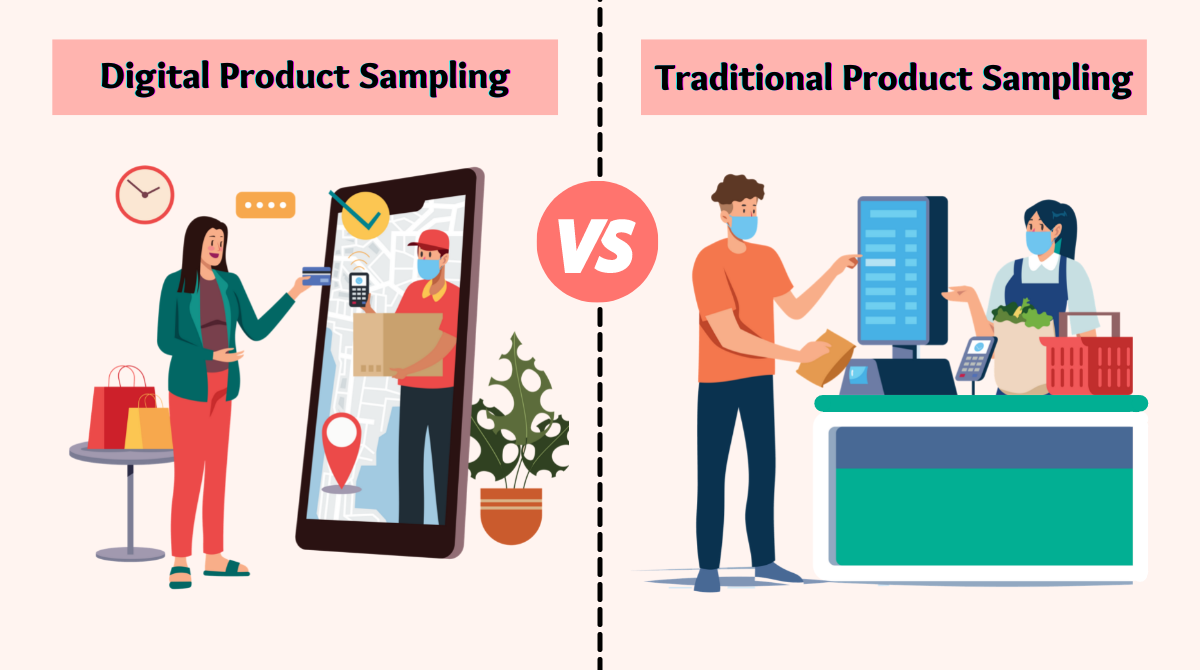Imagine launching a product, only to realize too late that a competitor already dominates the market with a better price, stronger messaging, or a loyal fanbase. Frustrating, right? You're not alone! Most brands fail not because their product is bad, but because they didn't study their competition closely enough.
This is where competitive analysis comes in. Competitive analysis isn't just about spying on rivals; it's about finding gaps in the market, refining your service/product marketing strategy, and staying ahead. By the end of this guide, you'll know exactly how to dissect competitors' moves, predict trends, and turn insights into action.
Ready to dominate your niche? Let's dive in.
What Is Competitive Analysis?
Competitive analysis is the process of studying and evaluating your competitors in order to understand their strengths, weaknesses, and overall strategies. This exercise involves a thorough breakdown of your competitors' market position, their sales and marketing tactics, growth strategies, and other critical business aspects that can directly influence your own company's performance.
At its core, competitive analysis is your roadmap to making informed decisions. It's like assembling a playbook that details your rivals' best moves and their potential missteps, enabling you to stay one step ahead.
However, it's important to remember that competitive analysis isn't about copying your competitors. It's not about underpricing them or trying to replicate their exact strategies. It's an ongoing process designed to spot gaps in the market and uncover new opportunities that your competitors may have missed.
Key Benefits of Competitive Analysis
Conducting competitive analysis brings several critical advantages to your business, helping you avoid common pitfalls and make more strategic decisions. In fact, companies utilizing competitive intelligence platforms have reported a fourfold increase in revenue. Some of the main benefits include:
- Spotting Market Opportunities: By understanding what your competitors offer and how they market their products, you can gain insights into consumer behavior and identify unmet customer needs, allowing you to tap into new market segments.
- Improving Pricing & Positioning: Analyze competitors' pricing strategies to find the sweet spot for your own products or services. This helps you avoid both underpricing and overpricing, ensuring you're competitive without compromising profitability.
- Boosting Marketing ROI: By observing which ads and content resonate with your competitors' audiences, you can optimize your own marketing efforts to maximize returns.
- Enhancing Customer Loyalty: By identifying and fixing the pain points your competitors overlook, you can create a more compelling and loyal customer base.
Why Competitor Analysis Matters
As the market evolves rapidly, conducting a competitive analysis has never been more crucial. Here are a few reasons why competitor analysis matters now more than ever:
1. The Market Moves Faster Than Ever
With new brands constantly emerging and consumer preferences shifting rapidly, staying stagnant is not an option. If you don't keep an eye on your competitors, you risk getting left behind before you even realize what happened.
2. Customers Compare Brands Instantly
Consumers today can easily compare products, prices, and reviews with just a quick Google search or scroll through social media. One glance at your competitor's offer might be enough to sway their decision. Without the insights gained from competitive analysis, you could be blindsided by a competitor's superior offer, leaving you to lose valuable market share.
3. Data-Driven Decisions Win
Relying on data-driven decisions is one of the most effective ways to navigate today's competitive landscape. Brands that use competitor insights to inform their strategies, whether by analyzing customer feedback, sales tactics, or digital presence, can quickly optimize their own campaigns, products, and overall business strategy.
The bottom line is that if you're not analyzing competitors, you're making decisions based on guesswork. And guesswork in today's fast-paced market is a luxury no brand can afford.
What to Include in a Competitive Analysis
The purpose of a competitive analysis is to give your business a strategic edge by uncovering what your competitors are doing right and wrong. Without this analysis, it's nearly impossible to understand how other brands in your industry are winning over your target audience. Here's what to include in a comprehensive competitive analysis:
- Target Market Insights: Identify both your business and your competitors' target audience and potential market gaps.
- Product or Service Comparison: Compare features, quality, and customer satisfaction between your offerings and competitors'.
- Market Share, Sales, and Revenue: Review financial metrics like market share, sales performance, and revenue trends for benchmarking.
- Pricing Strategy: Evaluate competitors' pricing to ensure you're competitive without undervaluing your product.
- Marketing and Social Media Tactics: Analyze the marketing strategies your competitors use, including their social media presence, paid campaigns, and content marketing.
- Customer Feedback and Ratings: Look at customer reviews to identify strengths and weaknesses in competitor offerings.
- Success Metrics and KPIs: Compare key performance indicators (KPIs) like engagement, retention, and acquisition costs.
How to Do a Competitive Analysis: Step-by-Step Guide with Example
Performing a competitive analysis is crucial for understanding your market position and identifying opportunities for growth. Here's how to do it:
Step 1: Create a Competitor Overview
Begin by selecting five to ten competitors with similar product or service offerings and a similar business model. Ensure you analyze both direct and indirect competitors, as well as a mix of startup and established businesses. This diversity will provide a comprehensive understanding of market dynamics.
To identify competitors, use Google, Amazon, or industry-specific directories. If you're a startup, dig deeper into rankings to uncover lesser-known competitors.
Example: If you run an organic skincare brand, your competitors might include Competitor A, Competitor B, and Competitor C.
| Brand | Market Position | Key Selling Point |
| Your brand | New organic skincare brand | All-natural ingredients, mid-tier pricing |
| Competitor A | Budget-friendly skincare | Science-backed formulas, affordable pricing |
| Competitor B | Premium clean beauty | "Suspicious 6-free" formula, minimalist branding |
| Competitor C | Luxury skincare | Inspired by Japanese beauty rituals, premium packaging |
Step 2: Conduct Market Research
Market research combines both primary and secondary methods. Primary research includes gathering data directly from customers or competitors' products, while secondary research involves studying existing information.
a) Primary research:
- Purchase competitors' products or services
- Conduct surveys and hold focus groups
- Interview customers for direct insights
b) Secondary research:
- Review competitors' websites
- Examine market conditions and technological trends
- Use SEO tools like Ahrefs or SEMrush for detailed competitor website analysis, including backlinks, keywords, and site health.
Example: A review of these brands' websites, customer reviews, and product offerings highlights key trends:
- Growing demand for clean beauty
- Ingredient transparency is a major selling point
- Luxury packaging appeals to high-end consumers
Step 3: Compare Product Features
Break down your competitors' product features and compare them to your own. Focus on attributes such as price, service offerings, target audience, and design. Pay special attention to how these factors contribute to their brand perception in the market. Narrow your comparison to the most critical features that directly impact customer decision-making and brand perception.
Example: Comparing your product line with competitors:
| Feature | Your brand | Competitor A | Competitor B | Competitor C |
| Price Range | $25-$50 | $6-$15 | $30-$80 | $50-$150 |
| Key Ingredients | Organic plant extracts | High-performance actives | Clean beauty formulas | Japanese-inspired botanicals |
| Packaging | Minimalist glass bottles | Basic plastic dropper bottles | Vibrant, playful designs | Luxury-inspired jars |
| Target Audience | Eco-conscious millennials | Budget-friendly skincare enthusiasts | Clean beauty advocates | Luxury skincare buyers |
| Product Variety | Limited (serums, moisturizers) | Extensive (acids, oils, serums) | Moderate (full skincare routine) | High-end, curated selection |
| Unique Selling Proposition (USP) | 100% organic, sustainable packaging | Affordable, effective active ingredients | "Suspicious 6-Free" clean formulas | Luxurious, traditional Japanese beauty rituals |
| Certifications | USDA Organic, Cruelty-Free | None | Clean at Sephora | Cruelty-Free, Dermatologist-Tested |
| Fragrance-Free Options | Yes | Mostly | Some products | Few |
| Retail Availability | Direct-to-consumer, boutique stores | Online, drugstores, beauty retailers | Sephora, Ulta, brand website | Sephora, high-end retailers |
Step 4: Analyze Marketing Strategies
Dive into your competitors' marketing approaches to understand their tactics and positioning. Key areas to analyze include:
- Social media strategies: Look at their engagement, content style, and platform usage.
- Website copy and product descriptions: How do they position their offerings?
- Paid ads, press releases, and promotional materials: What messaging and value propositions do they highlight?
Ask yourself questions such as:
- What value do they offer?
- What's their brand voice and customer story?
- Who is their target audience, and how can you differentiate?
To organize your findings, you can create a table like the one below. This allows for a clearer comparison of key marketing metrics such as social media following, content strategy, SEO performance, and email marketing.
Example: Examining social media presence, SEO strategy, and content marketing:
| Category | Your Company | Competitor A | Competitor B | Competitor C |
| Social Media Followers | ||||
| 5,000 | 2,500 | 9,000 | 200 | |
| 200 | 400 | 800 | 1,000 | |
| 3,000 | 5,000 | 1,000 | 1,000 | |
| YouTube | 600 | 200 | 900 | 800 |
| 8,000 | 6,000 | 8,000 | 4,000 | |
| Total Following | 16,800 | 14,100 | 19,700 | 7,000 |
| Blog/Content Strategy | ||||
| Link to Blog | [Link] | [Link] | [Link] | [Link] |
| Link to Resource Library | [Link] | [Link] | [Link] | [Link] |
| Publishing Cadence | Weekly | Bi-weekly | Monthly | Weekly |
| SEO Strategy | ||||
| Domain Authority | 45 | 40 | 55 | 30 |
| Alexa Traffic Rank | 100,000 | 200,000 | 75,000 | 300,000 |
| SimilarWeb Ranking | 20,000 | 50,000 | 10,000 | 60,000 |
| Number of Ranking Keywords | 5,000 | 3,500 | 8,000 | 2,500 |
| Email Strategy | ||||
| Link to Newsletter Subscribe | [Link] | [Link] | [Link] | [Link] |
| Link to Newsletter Design | [Link] | [Link] | [Link] | [Link] |
| Audience Size (If Known) | 15,000 | 10,000 | 20,000 | 5,000 |
Use this structured approach to identify where competitors excel and uncover opportunities for your own marketing strategy.
Step 5: Conduct a SWOT Analysis
After gathering data, perform a SWOT (Strengths, Weaknesses, Opportunities, and Threats) competitive analysis framework to assess your competitors' advantages and vulnerabilities. This will also highlight gaps in the market and areas where you can improve or differentiate your product.
Key questions to guide your SWOT:
- What strengths do competitors possess?
- Where do they fall short?
- Are there emerging trends or market gaps to explore?
Example: Based on the research, your brand's SWOT analysis looks like this:
| Strengths | Weaknesses |
| Unique organic formulas | Less brand recognition |
| Mid-tier pricing attracts a wide audience | Limited product range |
| Opportunities | Threats |
| Growing demand for clean beauty | Established competitors with bigger budgets |
| Potential influencer collaborations | Market saturation in skincare |
Step 6: Identify Your Position in the Market
Map out where you stand compared to competitors by creating a graph with key market factors on the X and Y axes. For example, plot customer satisfaction on the X-axis and market presence on the Y-axis. This will help you visualize your competitive standing and identify areas for improvement.
Example: By analyzing competitors, your brand can:
- Differentiate itself with sustainable, minimalist packaging
- Focus on content marketing and educational skincare blogs
- Partner with eco-conscious influencers to build brand trust
Step 7: Study Customer Feedback
Examine customer reviews, social media mentions, and industry news to gain insight into competitors' reputations. Pay attention to recurring feedback, both positive and negative, to uncover strengths and weaknesses that could influence your strategy.
Social media monitoring tools and review sites can help track ongoing customer sentiment.
Gain a Competitive Edge with Peekage: Competitive analysis isn't just about knowing your rivals, it's about understanding how consumers perceive you in the market. Peekage, as a consumer insight platform, enables targeted product testing and feedback collection, allowing you to refine your products, packaging, and messaging based on real consumer experiences.
Example: When analyzing customer feedback from competitor reviews and social media mentions, look for common patterns in the comments. For instance:
- Competitor A: Customers regularly mention fast delivery times but express frustration with slow response times from customer service.
- Competitor B: Customers are happy with the product quality but frequently mention issues with the website's ease of navigation.
This feedback can guide your strategy to offer an edge over your competitors. For example, if customers complain about slow response times with Competitor A, you could prioritize providing excellent and prompt customer service. Or, if customers are struggling with website navigation with Competitor B, you could enhance the usability of your site to improve the user experience.
Step 8: Research Sales Processes
Understanding your competitors' sales tactics is vital for optimizing your own sales strategy. Analyze how they present their offerings, follow up with leads, and close sales.
Study their pricing models, promotions, and customer support strategies to determine how they convert prospects into loyal customers.
Example: When reviewing Competitor B's sales process, you find the following insights:
- Competitor B offers first-time buyers a discount code, which they follow up with an automated reminder email after 48 hours.
- Their checkout process is simple, and they promote product add-ons at the point of purchase.
- Their sales team reaches out to leads with personalized emails, offering additional product recommendations based on previous purchases.
You can implement similar tactics to enhance your sales strategy. For example, consider offering a first-time discount code to attract new customers or improve your checkout experience with recommended add-ons. Additionally, personalized follow-ups with targeted recommendations could help you convert leads more effectively.
Step 9: Identify Market Opportunities
Use your competitor research to pinpoint market gaps or customer segments that are under-served. Focus your product development and marketing efforts on these opportunities to differentiate your brand.
Your unique value proposition could be based on a better customer experience, innovative features, or a competitive pricing model.
Example: After studying competitors, you discover that none of them offer eco-friendly products, but there's an increasing demand for sustainable options in the market. This presents an opportunity:
- Competitor Landscape: No competitor has fully embraced environmentally friendly practices, even though there's a market shift towards sustainability.
You could launch an eco-friendly product line or highlight your sustainable practices in your marketing efforts. By positioning your brand as an eco-conscious alternative, you could tap into a new customer segment and differentiate your business from competitors who have not yet embraced this trend.
Common Mistakes to Avoid
When conducting a competitive analysis, it's easy to make a few missteps. Here are some key mistakes to avoid:
- Focusing Only on Direct Competitors:
While it's important to analyze direct competitors, ignoring indirect ones can limit your insights. Indirect competitors might reveal valuable strategies that you can adapt for your own business.
- Overlooking Customer Sentiment:
Don't just focus on competitor products and services; take time to assess customer feedback. Reviews, word-of-mouth, social media, and surveys provide essential insights into what customers truly value, and what they don't.
- Relying on Outdated Data:
Market dynamics change quickly. Always ensure your analysis uses current data to stay relevant. Outdated competitor information can lead to decisions that no longer align with the market reality.
- Neglecting to Apply Insights:
Competitive analysis is only useful if you act on the information you gather. Don't just observe; use those insights to refine your marketing, products, and customer experience.
- Ignoring Your Unique Selling Proposition (USP):
It's easy to get caught up in what your competitors are doing, but don't lose sight of your unique strengths. Your USP should always guide your decisions, helping you stand out rather than simply copying what others are doing.
Conclusion
A thorough competitive analysis is essential for understanding your market landscape, uncovering opportunities, and staying ahead of the competition. By following the steps outlined in this guide, including identifying your competitors, evaluating their strengths and weaknesses, and leveraging insights into your own strategy, you can create a competitive edge that drives growth.
Remember, the key is not just gathering data, but turning those insights into actionable strategies. Keep refining your approach, and don't be afraid to adjust your tactics as the market changes. With the right competitive intelligence, your business can thrive in even the most competitive environments.
FAQs
To find competitors, start by searching for products or services similar to yours using Google or Amazon. Review the search results and identify both direct and indirect competitors. You can also use industry reports, review sites, and competitor research tools like SEMrush or Ahrefs to discover other players in your market.
It's recommended to conduct a competitive analysis at least once or twice a year to stay updated on market trends and competitor moves. However, if you're launching a new product, entering a new market, or facing increased competition, it may be beneficial to conduct one more frequently.
Once you've gathered insights from your competitive analysis, apply them by addressing gaps in the market that your competitors haven't filled, differentiating your messaging, refining your product or service offerings, or optimizing your marketing strategies. Tools like Peekage can help validate product changes before launch, ensuring that your business evolves based on real customer feedback.
To evaluate competitors' pricing, analyze their product/service offerings and compare prices across similar categories. Look for discounts, promotions, or bundled deals they might offer. Pay attention to the value they associate with their pricing, whether it's positioned as budget-friendly or premium. Understanding their pricing strategy can help you adjust your own pricing model to stay competitive.
You can track competitor strategies by setting up Google Alerts for their brand names and key products, monitoring their social media and website regularly, and using tools like SEMrush or Ahrefs to track their SEO performance. Regularly reviewing competitors' content and marketing campaigns will also allow you to spot shifts in their strategy and adjust yours accordingly.
References
- How to find and define who your competitors are, Qualtrics,
https://www.qualtrics.com/en-au/experience-management/brand/how-to-find-competitors/ - How to Do Market Research, Types, and Example, Investopedia,
https://www.investopedia.com/terms/m/market-research.asp - How to determine market positioning for your startup, Stripe,
https://stripe.com/gb/resources/more/how-to-determine-market-positioning-for-your-startup - Data-Driven Decision Making (Research & Expert Tips), Hubspot,
https://blog.hubspot.com/marketing/data-driven-decision-making




